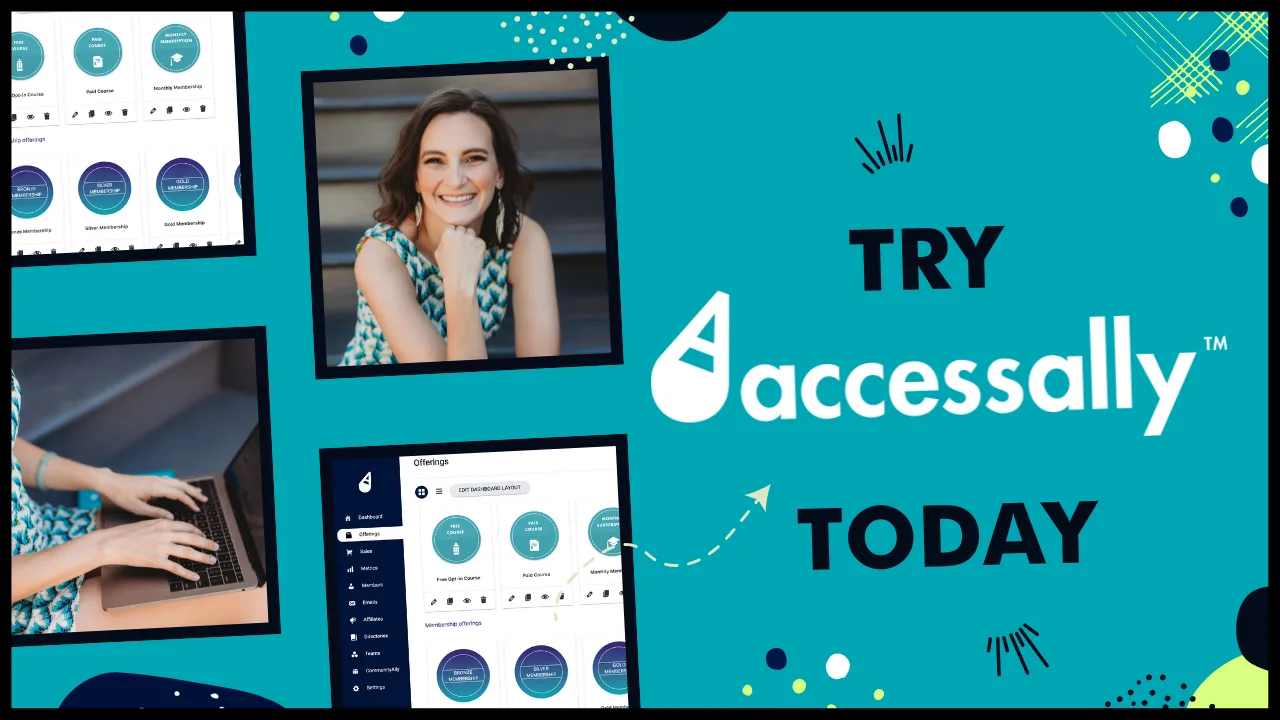Introduction and Overview
Behavioral triggers are your secret weapon for transforming passive observers into active participants when creating engaging online courses. Student engagement isn’t just about having great content—it’s about strategically designing moments that prompt your students to take meaningful action.
As someone who’s helped hundreds of course creators develop their programs, I’ve seen firsthand how the right triggers can dramatically improve completion rates and student success. Think of behavioral triggers as gentle nudges that guide your students toward their learning goals, much like a trusted friend offering encouragement at just the right moment.
These triggers can take many forms in your online course. You might incorporate progress bars that tap into our natural desire for completion, or create time-sensitive challenges that motivate students to stay on track. Even something as simple as a well-timed congratulatory message can spark the motivation to continue learning.
The psychology behind behavioral triggers is fascinating – they work by tapping into basic human desires and motivations. When students see their classmates engaging in discussions, they’re naturally drawn to participate. When they receive immediate feedback on their work, they’re more likely to continue progressing through the material.
In my experience working with platforms like Circle and Mighty Networks, I’ve discovered that successful engagement isn’t about overwhelming students with constant prompts. Instead, it’s about creating meaningful interactions that feel natural and valuable to your learners.
Throughout this guide, we’ll explore specific strategies for implementing these triggers in your course, from designing compelling call-to-action buttons to crafting automated messages that feel personal and timely. You’ll learn how to create an environment where engagement becomes second nature for your students, leading to better learning outcomes and higher course completion rates.
Foundation Concepts and Planning
Before diving into specific behavioral triggers, we need to lay the groundwork for meaningful student engagement. Here’s the thing – successful engagement strategies aren’t just about fancy features or constant notifications. They’re built on a deep understanding of your students’ learning journey and carefully planned touchpoints that feel natural and motivating.
Start by mapping out your students’ current behavior patterns. What times of day do they typically log in? Which lessons do they spend the most time on? Where do you see engagement dropping off? This information becomes your baseline for implementing practical triggers. For example, if you notice students consistently logging in during their lunch break, you might schedule encouraging check-in messages to arrive just before that time.
Understanding psychological motivators is equally important. Students are more likely to engage when they feel a sense of progress, community, and personal investment. Consider creating milestone celebrations at key course completion points – perhaps a special video message or digital badge that acknowledges their achievement. These small victories create positive associations and encourage continued participation.
The key is to design triggers that feel helpful rather than intrusive. Think about your own experience with apps and platforms. Which notifications make you want to engage, and which ones do you instantly dismiss? Your students will respond better to triggers that add genuine value to their learning experience.
Create a trigger framework that addresses different engagement levels. For active students, focus on maintaining momentum through progress-based triggers like “You’re on a 5-day learning streak!” For those who are falling behind, implement re-engagement triggers that acknowledge their challenges and offer specific support: “We noticed you haven’t completed Module 2 yet – would a quick review session help?”
When planning your triggers, consider both automated and personal touch points. While automation helps maintain consistent engagement, nothing replaces the impact of personal interaction. Schedule regular live office hours or send personalized video feedback on assignments. These human connections create stronger emotional bonds with your course and increase the effectiveness of your automated triggers.
Remember to build in flexibility – what works for one group of students might not work for another. Plan to regularly review and adjust your trigger strategy based on student feedback and engagement metrics.
Step-by-Step Implementation Guide
Here’s the thing – creating effective behavioral triggers doesn’t have to be complicated. Let’s walk through implementing these engagement-boosting elements in your online course with a practical approach that you can start using today.
Begin by mapping out your students’ natural learning flow. Think about where they typically pause or struggle in your course. These moments are perfect opportunities to introduce triggers that encourage continued engagement. For instance, if students often get stuck after completing module one, you might implement an automatic congratulatory email that also previews the exciting content coming in module two.
Next, set up your progress tracking system. Most learning platforms allow you to monitor student advancement, but the key is making this visible to your students. Configure your course settings to display progress bars, completion checkmarks, or achievement badges. When students can see how far they’ve come and how close they are to their next milestone, they’re more likely to push forward.
Create a consistent reward structure throughout your course. This doesn’t mean you need elaborate prizes – simple acknowledgments can be powerful motivators. Consider implementing automated messages that celebrate specific achievements: “You’ve completed three assignments in a row!” or “You’re in the top 10% of active students this week!” These micro-celebrations help maintain momentum.
Design your content chunks with strategic break points. Rather than presenting long, overwhelming lessons, break them into shorter segments with clear action items at the end of each. Follow each segment with a quick win activity that students can complete in 5-10 minutes. This builds confidence and creates a positive association with course progression.
Incorporate social proof elements throughout the learning experience. Set up a community space where students can share their wins and support each other. You might use Circle’s community platform to create dedicated spaces for different course modules, allowing students to connect with peers at similar stages in their journey.
Don’t forget to implement recovery triggers for when engagement dips. Set up automated check-ins for students who haven’t logged in for a week, but make these messages encouraging rather than guilt-inducing. A simple “We noticed you haven’t visited your course recently – here’s a quick 5-minute activity to get back on track” can work wonders.
Finally, establish a feedback loop to refine your triggers over time. Use analytics to track which triggers are most effective at re-engaging students. The Mighty Networks platform offers excellent insights into student behavior patterns, helping you identify where additional support might be needed.
Remember to test your triggers before full implementation. Start with a small group of beta students and gather their feedback. Pay attention to timing, tone, and frequency of your triggers – you want to encourage without overwhelming. With these elements in place, you’ll create an engaging learning environment that naturally motivates students to keep moving forward.
Advanced Strategies and Techniques
Now that you’ve mastered the basics of behavioral triggers, let’s dive into some sophisticated strategies that can transform your student engagement levels. Here’s the thing – the most powerful triggers often combine multiple psychological elements to create a compelling learning experience.
One advanced technique I’ve seen work wonders is what I call “progressive achievement mapping.” Start by breaking down your course milestones into micro-achievements that students can unlock every 15-20 minutes of active learning. These small wins trigger dopamine releases in the brain, creating a positive feedback loop that keeps students coming back for more. For example, in my course design workshops, we create interactive knowledge checks that unlock special bonus content when completed, making the learning process feel like an engaging journey of discovery.
Implementing social proof triggers strategically throughout your course can dramatically boost completion rates. Consider adding a live achievement feed that showcases other students’ progress in real-time. When learners see their peers advancing through the material, it naturally triggers their competitive spirit and desire to keep pace. You can enhance this further by incorporating peer-to-peer accountability partnerships, where students team up to support each other’s learning journey.
Time-based triggers are another powerful tool when used thoughtfully. Instead of overwhelming students with deadline pressure, try using positive time anchors. Send personalized congratulatory messages when students maintain a consistent learning streak, or offer bonus materials that unlock only after completing sections within a suggested timeframe. This creates a sense of momentum without inducing stress.
Gamification elements can be particularly effective when aligned with your course objectives. Rather than simply adding points and badges, design challenges that require students to apply what they’ve learned in practical ways. For instance, you might create a “client simulation” where students must demonstrate their skills in a real-world scenario to unlock advanced modules.
The key is to ensure these triggers feel natural and meaningful within your course context. Remember to monitor student feedback and engagement metrics to fine-tune your approach. As noted in the Circle Blog, successful online communities thrive on well-designed engagement mechanisms that feel authentic rather than manipulative.
By thoughtfully implementing these advanced strategies, you’ll create a learning environment that naturally motivates students to stay engaged and complete your course.
Common Challenges and Solutions
Let’s tackle the roadblocks you might encounter when implementing behavioral triggers in your online courses. One of the most frequent challenges I see course creators face is student overwhelm. When you introduce too many triggers at once, students can feel bombarded and shut down instead of becoming more engaged. The key is to start small – introduce one or two strategic triggers per module and gradually build from there.
Another common hurdle is inconsistent student participation. You might notice that learners start strong but their engagement dwindles over time. To combat this, create a progressive triggering system. For example, begin with simple completion checkmarks for reading assignments, then advance to more interactive elements like discussion prompts or peer feedback activities. This gradual progression helps students build momentum naturally.
Technical difficulties can also derail even the best-planned triggers. Here’s the thing – not all students will be equally tech-savvy. Consider providing short tutorial videos showing exactly how to interact with different course elements. I’ve found that a quick 2-minute walkthrough can prevent hours of frustration and help maintain student momentum.
Sometimes course creators struggle with striking the right balance between automated and personal triggers. While automation is efficient, relying on it too heavily can make the learning experience feel impersonal. Try combining automated checkpoints with personalized elements – for instance, set up automated congratulatory messages for completing modules, but personally reach out when students achieve major milestones.
Tracking and measuring trigger effectiveness can be challenging too. Consider using your learning platform’s analytics to monitor which triggers generate the most engagement. Pay attention to completion rates, time spent on activities, and student feedback. Don’t be afraid to adjust or remove triggers that aren’t serving your learning community well. Remember that what works for one course might not work for another – staying flexible and responsive to your specific student needs is crucial for success.
Best Practices and Optimization
When it comes to behavioral triggers in your online course, implementing them effectively requires careful planning and continuous refinement. Here’s the thing: even small adjustments to your trigger timing and placement can dramatically impact student engagement.
Start by mapping out your students’ natural workflow within the course. Place triggers at key decision points where learners might need an extra nudge. For example, if you notice students typically drop off after completing module 2, consider adding a congratulatory email trigger that highlights their progress and previews exciting content in module 3.
Personalization is crucial for trigger effectiveness. Use your learning management system’s dynamic tagging capabilities to segment students based on their engagement levels and learning preferences. A struggling student might receive more supportive check-ins, while a high achiever could get advanced challenge prompts.
Timing is everything when it comes to behavioral triggers. Schedule automated messages and prompts during peak activity hours for your student demographic. According to research from the Mighty Networks Blog, engagement rates increase by up to 40% when triggers align with students’ preferred learning times.
Monitor your trigger performance metrics closely. Track which prompts lead to increased participation and which ones students tend to ignore. Don’t be afraid to experiment with different approaches – try varying your message tone, adjusting delivery timing, or testing different types of rewards.
Remember to maintain a balanced approach. Too many triggers can overwhelm students and lead to notification fatigue. Space out your interventions thoughtfully, focusing on quality over quantity. A well-timed, personalized message will always outperform frequent generic reminders.
Consider creating trigger sequences that build upon each other. For instance, start with a gentle reminder, follow up with an encouraging progress update, and culminate in a celebration of achievement. This progressive approach helps maintain momentum while avoiding student burnout.
Regular optimization is key. Review your trigger performance monthly, gather student feedback, and refine your approach based on real data. Your behavioral trigger strategy should evolve alongside your students’ needs and course objectives.
Case Studies and Examples: Behavioral Triggers in Action
Let me share some real-world examples of how course creators have successfully implemented behavioral triggers to boost student engagement. One of my favorite success stories comes from Sarah, a language instructor who transformed her struggling Spanish course into a thriving learning community.
Here’s the thing: Sarah noticed her students would often start strong but lose momentum around week three. She implemented a simple yet effective trigger system – sending personalized video messages to students who completed their first two conversation exercises. This small recognition created a powerful feedback loop, leading to an 85% increase in lesson completion rates.
Another inspiring example comes from Marcus, a fitness course creator who struggled with student accountability. He introduced micro-achievements throughout his 12-week program, celebrating even the smallest wins. When students logged three consecutive workouts, they unlocked a bonus technique video. This gamification trigger tapped into students’ natural desire for achievement, resulting in a 67% improvement in course completion rates.
I worked with a business coach named Jamie who discovered that social proof triggers were game-changers for her course. She created a “Weekly Win Wall” where students could share their victories, no matter how small. This peer-to-peer recognition system sparked friendly competition and community support, doubling student participation in discussion forums.
Consider Elena’s cooking course, where she noticed students felt overwhelmed by complex recipes. She introduced “action triggers” – specific times and contexts for completing tasks. Students were prompted to prep ingredients on Sunday evenings when they typically had more free time. This simple contextual trigger increased recipe completion rates by 73%.
The key is understanding that behavioral triggers don’t need to be complicated. A photography instructor found success by sending students daily phone notifications with 5-minute photo challenges. These micro-commitments kept students engaged and practicing regularly, leading to better skill development and course satisfaction.
These examples demonstrate how thoughtful trigger implementation can dramatically improve student success. Start by identifying where your students typically disengage, then design specific triggers to maintain momentum at those critical points. Remember to test and refine your triggers based on student feedback and engagement metrics.
Future Considerations and Conclusion
As you continue developing behavioral triggers in your online courses, remember that student engagement is an evolving journey that requires ongoing refinement. The digital learning landscape is constantly shifting, and what works today might need adjustment tomorrow. Here’s the thing – the most successful course creators are those who remain flexible and responsive to their students’ changing needs.
Looking ahead, consider implementing A/B testing for different trigger combinations. You might discover that morning check-in prompts work better than evening ones, or that social proof notifications are more effective when paired with progress tracking. Pay attention to how your students respond and be ready to adjust your approach accordingly.
Technology will continue to play a crucial role in this space. Keep an eye on emerging tools and platforms that could enhance your behavioral trigger strategy. For instance, AI-powered personalization is becoming increasingly sophisticated, allowing for more targeted and timely engagement prompts. While these advances are exciting, always prioritize genuine connection over technological bells and whistles.
Don’t forget to regularly gather feedback from your student community. Their insights are invaluable in understanding which triggers resonate and which might need adjustment. Consider creating a feedback loop where students can share their experiences and suggestions for improvement. This not only helps you refine your approach but also makes students feel valued and heard.
As you implement these strategies, focus on creating a sustainable system that you can maintain long-term. Start small, measure results, and gradually expand what works. The goal isn’t to overwhelm students with triggers but to thoughtfully guide them toward success in your course. With consistent attention and care, you’ll develop a robust engagement framework that serves both you and your students well into the future.




